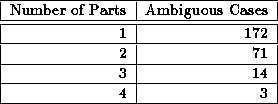
Table 1: Number of Ambiguous Cases
Kameda,
Research,
Documents and Info



There are two evaluation criteria for the pose estimation in our method. One is whether the projected region of the estimated pose coincides with the silhouette given to the system, and the other is whether the estimated rotation angles are same as those of the original pose. Since we use silhouettes as input information, there may occur cases whose results qualify the former criterion but not the latter one.
To evaluate the performance of our proposed method, we conducted an experiment with computer generated silhouette images of a human body. The model we used consisted of 17 parts where the root part corresponded to the head. The size of the silhouettes was 500 pixels by 500 pixels and the target object was scaled to 4.42 mm per pixel. The unit for generating candidates in Step 1 was set to 20 degree.
We experimented with 1,843 cases and in 1,107 cases the estimated results qualified the former criterion. Among them, 847 cases qualified the latter criterion. In the remaining 260 cases, the estimated results contained at least one part whose rotation angles were not determined uniquely. Table 1 shows the number of ambiguous cases.

Table 1: Number of Ambiguous Cases
Figure 1 shows two cases which qualify both criteria. Figure 2 shows a case which qualifies only the former one. In this case, the pose of the left arm which consists of three parts could not be determined uniquely.
There were 966 cases in which Step 3 was not used (that means the method executed Step 1 just 17 times). Concerning the rest 141 cases, the method could clear the former criterion because the backtrack in Step 3 was applied. Figure 3 represents the distribution of the executed times of Step 1 in these cases.
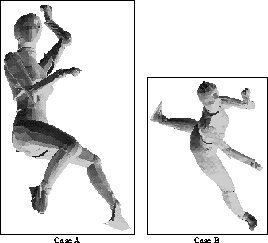
Figure 1: Uniquely Estimated Cases
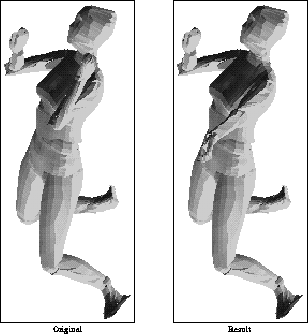
Figure 2: Ambiguously Estimated Case
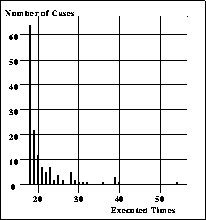
Figure 3: Executed Times of Step 1
736 cases did not satisfy the former criterion in this experiment. Figure 4 shows the distribution of the silhouette areas not covered by the projected regions. These failures occur because the method does not examine the uncovered silhouette area during the process progression.
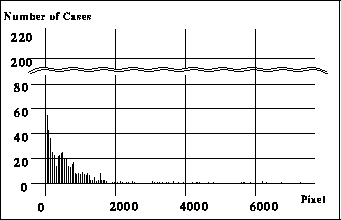
Figure 4: Uncovered Silhouette Area


